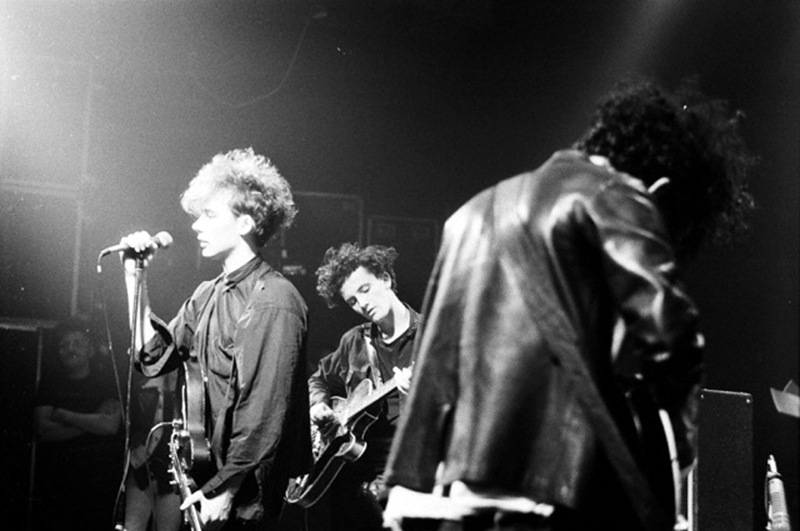A Ringing Sound: The Jesus and Mary Chain on Psychocandy
Music Interviews
“Upside Down” was an overnight success. “I think they were shocked that it did so well,” says McGee. Clocking in at three minutes, the track is a perfectly crafted pop tune with a heaping dose of ear-slicing feedback laid over it. “It was an incredible record, I thought,“ says McGee. “It’s one of the wildest records that I think I’ve ever heard—it’s a totally mental record.”
As a young band, “[The Jesus and Mary Chain] were ridiculously naïve,” says Jim. “Everybody thought we were unbelievably brash and insufferable. People thought we were aloof—we were shy, you know.” The single’s success validated the brothers’ grandiose aspirations. “We felt very good about what we were doing,” Jim says. “We didn’t want to wear charity shop jumpers and play in front of 20 people that were friends in a room above a pub. We were making all this insane noise music, and we thought that we were going to take that into football stadiums or whatever. We wanted to be on the radio.”
The group gained notoriety from their subsequent live shows, which were characterized by short, disorderly sets and the band’s seemingly disaffected attitudes. “People were paying next to nothing to come and see us, so we felt like we could do what we wanted—and that’s what we wanted to do,” says Jim. The mayhem, which resulted in riots at various gigs, was born out of more practical reasons than ideological, though. “We didn’t have that many songs,” he says. “It was all about noise at the time. To do that for an hour and a half would just be absurd. [We felt] that it should just be out there—‘wham’—hit those people square in the eyes and just leave. So we did that, but we only did that a handful of times.” The reaction to the handful of violent gigs catapulted the band to the national stage. “It was quite an experience,” Jim says. “It was like an explosion.”
McGee, who was also managing the band, concedes that his label didn’t have the resources that were necessary for the Mary Chain’s exploding career. “Creation was very small at the time, in 1984,” McGee says. “It wouldn’t have been too hard to have bigger aspirations than Creation at that point.” It’s a silly assertion, in hindsight—McGee went on to become a household name himself, releasing seminal records from My Bloody Valentine, Slowdive, Primal Scream and Oasis. “All of the bands that we admired seemed to have big labels that would bankroll them,” Jim says. “We kind of thought that that’s what we needed.” The group left Creation for Warner Music Group subsidiary Blanco y Negro Records. Reid now recognizes the move as a mistake, as it was not the Mary Chain’s label affiliation that brought them enduring respect—it was their music.
In the spring of 1985, after failed attempts at recording with Stephen Street at Island Studios, the group began recording Psychocandy at Southern Studios with engineer John Loder. At Island, Reid recalls that recording was obstructed by people who hadn’t understood the group’s vision. “We had had arguments in the studio with the technicians who couldn’t really understand the band, [and] why we would make the band sound like the amps were fucked,” Jim says. Loder took a hands-off approach. “It was like a breath of fresh air,” Jim says. “He’d just set the studio up, set the desk up, go away and leave us to it. He would say, ‘Look, if you’re having any difficulties, just come upstairs and I’ll come down and help you.’ That was exactly what we needed.” Six weeks and £17,000 later, Psychocandy was completed.
